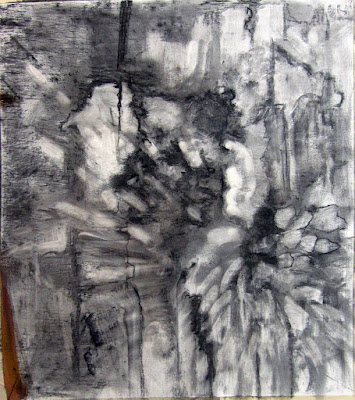The person for whom drawing comes easily may not end up being the best draftsman.
| Shoes, by Carol L. Douglas. Oil on canvasboard, available. |
One of my students is a retired violinist. We were musing on the question of technique last week. “Practice doesn’t make perfect,” she said. “Perfect practice makes perfect.” An aspiring violinist can spend hours dragging a bow across strings, but if someone hasn’t told him about rosin, the resulting caterwauling will be awful.
As a hater of school and generally bad student (I never could sit still) I was probably more self-taught than I was educated. But, to be honest, there’s still very little ‘self’ in my education. My father taught me to draw and paint when I was a child. I then revised my technique at the Art Students League in New York. Whenever I come up against a technical barrier I can’t get over, I find someone who has solved that problem and I study their technique, either by taking a workshop from them or reverse-engineering one of their paintings.
| Baby monkey, by Carol L. Douglas. Oil on canvasboard, available. |
This past week, I promised my Zoom students the most difficult class they’d ever work through. (You can read it on my blog here.) I also assured them that, if they were patient and mastered what I was teaching, they would immediately be much better artists. That’s because most painters trip up in the drawing phase. Angles and measurements are the root of all drawing.
When people say someone is ‘talented’, they usually mean that person can draw well. But that’s not an innate skill; it’s learned, even by those of us for whom it seems almost intuitive. There will be some of us who can push our skills to become NASCAR drivers, but the majority of us can learn to draw as fluently as we can drive.
| Saran wrap and stuffed toy, by Carol L. Douglas. Oil on canvasboard, available. |
I’m someone for whom drawing comes easily. It’s taken me a long time to realize that can actually be an impediment to real skill. Because people like me can see spatial relationships quickly, without having to think through them, we don’t always take the time to measure. That’s great, except when our intuition fails us—and it will. The human mind is stubbornly attached to regularity. Left to its own devices, my brain will shorten long distances, generalize the shapes of trees, and otherwise cut corners. Artists who rely on their intuitive drawing skills will never understand why all their rocks look the same and their trees have no character.
Meanwhile, our tortoises struggle to draw an ellipse, and find the business of measuring difficult. Still, they persevere and practice. They draw through their daily lunch break, taking fifteen minutes a day to measure and depict the most prosaic things—a box of tissues, their keys. Suddenly—aha!—the idea of angles as a tool of measurement makes sense. They suddenly understand that the same technique they used to measure their car keys can also be used to mark off the rivulets and turns of a river valley, or a mountain range. It takes them longer to get to the stage where they can draw anything, but—unlike our intuitive draftsman—they learn to draw those things accurately.
| Happy New Year, by Carol L. Douglas. Oil on canvasboard, available. |
Cornelia Fossonce told me that her painting teacher made her draw a matchbox one hundred times. Today, she is able to play with paint handling and composition precisely because her drawing is so perfect.
I have to admit that I didn’t like that lesson when Cornelia handed it out, but I’ve come to appreciate it. If you want to be a better artist, sublimate your inner hare. Be a bit more of a tortoise. Take the time to learn to draw accurately, and your painting will improve immeasurably.






